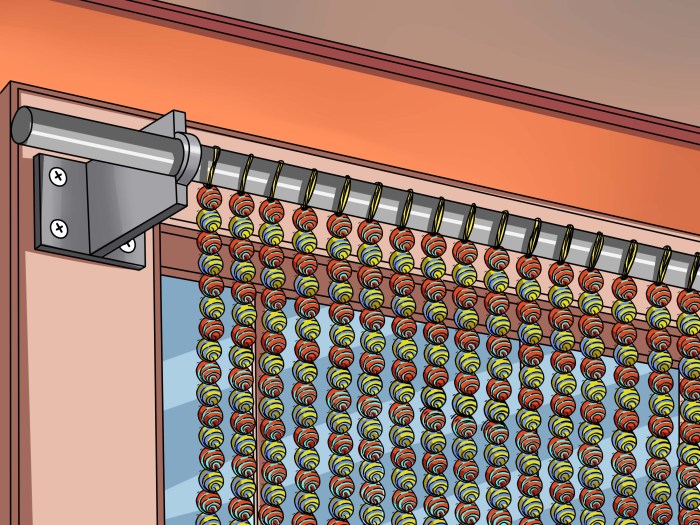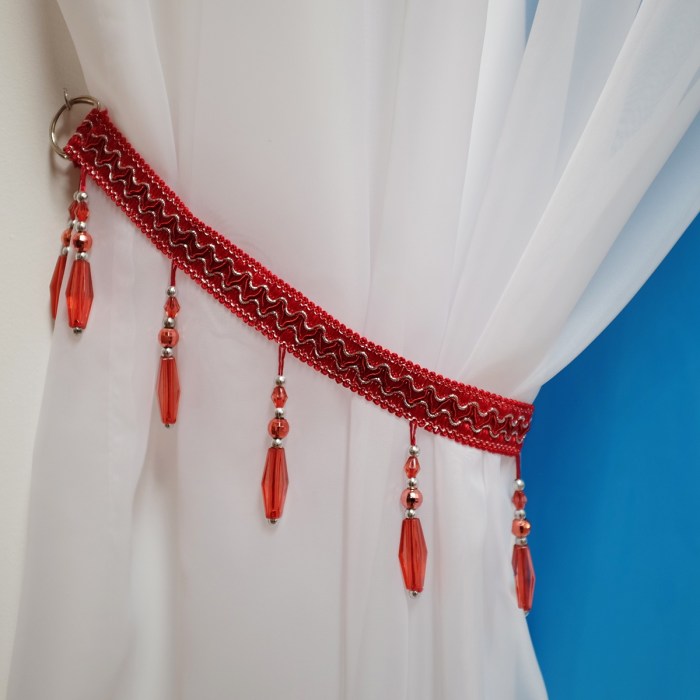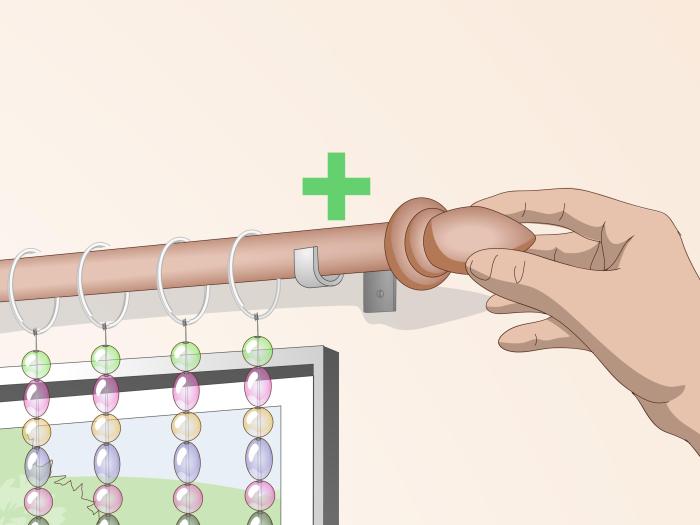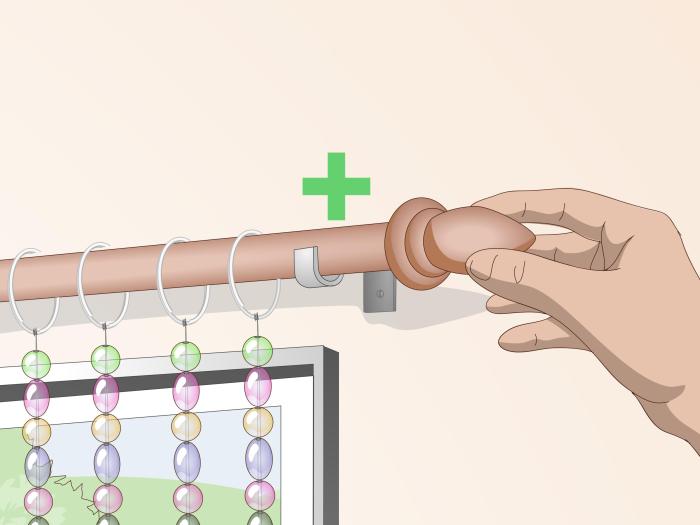DIY beaded curtains set the stage for a captivating journey into the world of handcrafted décor, where imagination and creativity intertwine. This comprehensive guide delves into the history, design, and construction of these versatile accents, providing you with all the information you need to create your own stunning beaded curtain.
From choosing the perfect beads and tools to mastering the techniques for assembling and hanging your creation, this guide will walk you through each step of the process. Discover the endless possibilities for styling and decorating with beaded curtains, whether you’re looking to add a touch of whimsy to your living room or create a unique and functional room divider.
Introduction to DIY Beaded Curtains

Beaded curtains, also known as string curtains, have a rich history spanning centuries and cultures. Their origins can be traced back to ancient civilizations, where they served both decorative and functional purposes. From the intricate beaded curtains adorning palaces in ancient China to the beaded doorways of Native American homes, these beautiful and versatile creations have played a significant role in shaping the aesthetics of various cultures.
Today, beaded curtains continue to be a popular choice for adding a touch of elegance, whimsy, and functionality to homes and commercial spaces. Their versatility allows them to be incorporated into diverse settings, from bohemian living rooms to sophisticated restaurants, creating a unique ambiance that reflects personal style and design preferences.
Popular Beaded Curtain Styles and Materials
Beaded curtains are available in a wide array of styles, each offering a distinct visual appeal and character. Here are some popular styles and materials:
- Wood Bead Curtains: Crafted from natural wood beads, these curtains offer a rustic and earthy charm, perfect for adding a touch of nature to any space. The beads can be stained or painted to match the existing décor, creating a cohesive and personalized look.
- Crystal Bead Curtains: Known for their shimmering and reflective properties, crystal bead curtains create a dazzling and luxurious atmosphere. They are often used in elegant dining rooms, foyers, and even bedrooms to add a touch of sparkle and sophistication.
- Glass Bead Curtains: Similar to crystal bead curtains, glass bead curtains offer a variety of colors, shapes, and sizes, allowing for endless creative possibilities. From sleek and modern to vintage and eclectic, glass bead curtains can be tailored to any style preference.
- Metal Bead Curtains: For a contemporary and industrial look, metal bead curtains are an excellent choice. These curtains are often made from aluminum, copper, or stainless steel, adding a touch of modern elegance to any space.
- Plastic Bead Curtains: Plastic bead curtains offer a budget-friendly and versatile option, available in a wide range of colors and designs. They are often used in children’s rooms, play areas, and even as room dividers, adding a playful and colorful touch to any setting.
Materials and Tools for Beaded Curtains

Creating a beaded curtain is a fun and rewarding project, and the first step is gathering the right materials and tools. This section will guide you through the essential elements you’ll need to bring your beaded curtain vision to life.
Essential Materials for Beaded Curtains, Diy beaded curtain
- Beads: The heart of your beaded curtain! You’ll need a significant quantity of beads, depending on the size and design of your curtain.
- String or Wire: This will hold your beads together and create the curtain strands. String is a popular choice for its flexibility and ease of use, while wire can offer greater durability and a more structured look.
- Rod or Rail: This is the base for your curtain, providing a sturdy structure to hang the strands. You can use a curtain rod, a dowel rod, or even a sturdy branch for a rustic touch.
- Hanging Hardware: This includes hooks, rings, or clips that attach your curtain to the rod or rail. Choose options that are suitable for the weight of your beaded curtain.
- Scissors or Wire Cutters: You’ll need these to cut the string or wire to the desired length for your strands.
Types of Beads
The world of beads is vast and varied, offering endless possibilities for your beaded curtain. Here are some common types:
- Glass Beads: These are popular for their shine, variety of colors, and affordability. Glass beads come in various sizes, shapes, and finishes, from smooth and polished to textured and iridescent.
- Wooden Beads: Wooden beads offer a natural, earthy look and feel. They come in different wood types, such as bamboo, walnut, and oak, and can be stained or painted for customization.
- Acrylic Beads: Acrylic beads are lightweight, durable, and available in a wide range of colors and finishes. They are often used for creating contemporary or colorful beaded curtains.
- Metal Beads: Metal beads, such as silver, gold, or copper, add a touch of elegance and sophistication. They can be polished, textured, or even antique-finished for a unique look.
- Stone Beads: Stone beads, such as agate, amethyst, or turquoise, bring a natural beauty and a touch of spiritual energy to your beaded curtain.
Tools for Crafting Beaded Curtains
| Tool | Function |
|---|---|
| Scissors or Wire Cutters | Cutting string or wire to desired length |
| Measuring Tape | Determining the length of your curtain strands |
| Needle-Nose Pliers | Holding and manipulating beads, especially small ones |
| Beading Wire or String | Creating strands for your curtain |
| Ruler | Measuring the length of your curtain strands |
| Marker or Pencil | Marking the string or wire for bead placement |
| Curtain Rod or Rail | Providing a structure for hanging the curtain |
| Hooks, Rings, or Clips | Attaching the curtain to the rod or rail |
Designing Your Beaded Curtain

Designing your beaded curtain is an exciting step where you can personalize your project and create a unique piece that reflects your style. Consider the overall look you want to achieve, the space you’re decorating, and the practical aspects of your curtain.
Dimensions and Spacing
The dimensions of your beaded curtain will determine its overall size and visual impact. The length and width are crucial factors to consider, along with the spacing between the beads.
- Length: The length of your beaded curtain will depend on the height of the space you’re decorating. For a standard doorway, a length of 80-90 inches is common. However, you can customize the length to create a dramatic effect or to suit your specific needs.
- Width: The width of your beaded curtain will determine how wide the opening is. A width of 36-48 inches is typical for a doorway, but you can make it wider or narrower depending on your space.
- Bead Spacing: The spacing between the beads will influence the overall look and feel of the curtain. Close spacing creates a dense, luxurious effect, while wider spacing provides a more airy and open look. Experiment with different spacing patterns to achieve your desired aesthetic.
Visual Representation of a Simple Beaded Curtain Design
Imagine a beaded curtain with a width of 40 inches and a length of 80 inches. The curtain is made of a single strand of beads, with each bead measuring 1 inch in diameter. The beads are spaced 1/2 inch apart, creating a consistent and elegant look. This design allows for a generous flow of light and air while still providing a sense of privacy and visual interest.
Creating Patterns and Textures
There are numerous techniques for creating patterns and textures within your beaded curtain. Here are a few ideas:
- Color Combinations: Incorporate different colors of beads to create stripes, gradients, or geometric patterns. You could use two or three complementary colors for a subtle effect or experiment with bolder color contrasts for a more dramatic look.
- Bead Shapes and Sizes: Varying the shape and size of the beads can add depth and texture to your curtain. Combine round beads with faceted beads, or use different sizes of the same bead type to create visual interest. You can also experiment with different bead materials, such as glass, wood, or metal, to add texture and dimension.
- Stringing Techniques: You can create unique patterns by using different stringing techniques. For example, you can string the beads in a straight line for a simple look or experiment with zig-zag patterns or spiral designs. You can also incorporate knots or other decorative elements into your stringing to create a more intricate design.
Embarking on a DIY beaded curtain project is not only a rewarding creative endeavor but also an opportunity to personalize your space with a touch of handcrafted charm. With this guide, you’ll be equipped to design, build, and hang your own unique beaded curtain, transforming your home into a haven of beauty and individuality.
A DIY beaded curtain can be a fun and stylish way to add a touch of personality to your home. You can use a variety of materials, from beads to shells, to create a unique and eye-catching design. If you’re looking for inspiration, you might be interested in the lipitor 20mg website, which features a wide range of DIY projects, including beaded curtains.
Once you’ve chosen your materials, you can start stringing them together to create your own unique and personalized curtain.

